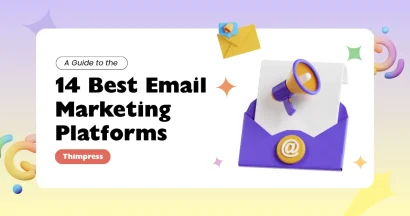Are you looking for ways to boost your website’s visibility and attract more organic traffic? Understanding how to rank higher on Google is essential for any business with an online presence.
Do you know that search engine optimization (SEO) is no longer optional; it’s a necessity? Notably, over 80% of marketing professionals have observed a positive impact from their SEO efforts.
This comprehensive guide will walk you through the key steps to improve your Google rankings and drive more qualified visitors to your site. From keyword research and content optimization to link building and technical SEO, we’ll cover everything you need to know to climb the search results and achieve online success.
Let’s get started!
Eduma – Education WordPress Theme
We provide an amazing WordPress theme with fast and responsive designs. Let’s find out!
How To Rank Higher on Google?
Step 1: Keyword Research and Optimization To Rank Higher on Google
Keywords are the terms people use when searching online. Effective SEO starts with understanding what your target audience is searching for. Begin by brainstorming topics related to your business, products, or services. Then, use keyword research tools like Google Keyword Planner, SEMrush, Ahrefs, or Moz Keyword Explorer to refine your list. These tools provide data on search volume, competition, and related keywords, helping you identify the most valuable terms to target.
Focus on a mix of keyword types. “Head terms” are broad and have a high search volume but also high competition (e.g., “shoes”). “Long-tail keywords” are more specific and have lower search volume but less competition (e.g., “women’s running shoes for flat feet”). Long-tail keywords often indicate a stronger purchase intent and can attract highly qualified traffic.
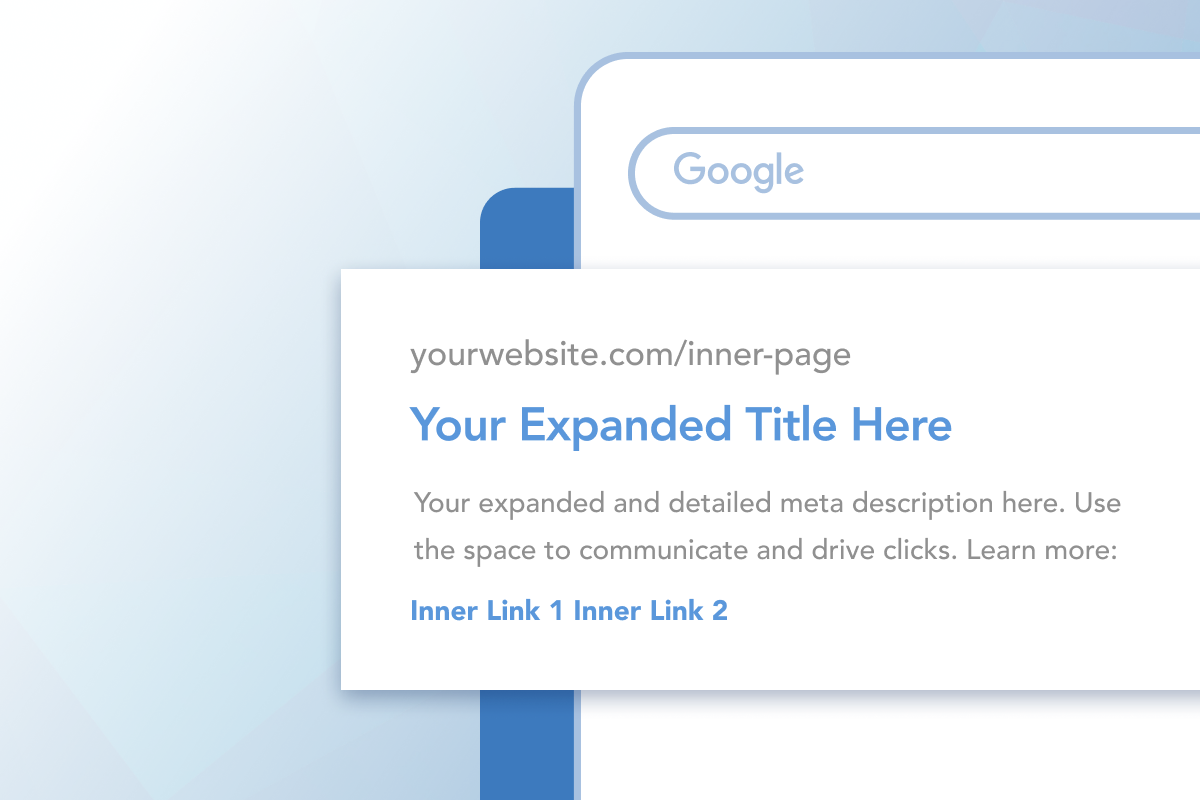
Once you’ve identified your target keywords, integrate them naturally into your website content. This includes:
- Title Tags: Craft compelling title tags (under 60 characters) that accurately reflect the page’s content and include your primary keyword.
- Meta Descriptions: Write concise and informative meta descriptions (under 160 characters) that entice users to click. Include relevant keywords but prioritize clarity and persuasiveness.
- Headings (H1-H6): Use header tags to structure your content logically. The H1 tag should contain your primary keyword and clearly state the page’s topic. Use H2-H6 tags for subheadings, incorporating related keywords where appropriate.
- Body Text: Naturally weave your target keywords into the body of your content. Focus on providing valuable and informative content that addresses the user’s search intent.
- Image Alt Text: Describe the image using descriptive alt text, including relevant keywords where appropriate. This helps search engines understand the image content and improves accessibility.
- URLs: Use short, descriptive URLs that contain your target keyword.
Avoid keyword stuffing, which is the practice of unnaturally overusing keywords. This can harm your rankings and create a poor user experience. Prioritize creating high-quality, user-friendly content that incorporates keywords naturally.
For WordPress users, installing the right SEO plugins can make keyword optimization much easier.
Step 2: Understanding Search Intent To Rank Higher on Google
Search intent refers to the reason behind a user’s search. What are they hoping to find? Understanding search intent is crucial for creating content that satisfies user needs and ranks well.
Analyze the top-ranking pages for your target keyword to understand the search intent. Consider the following:
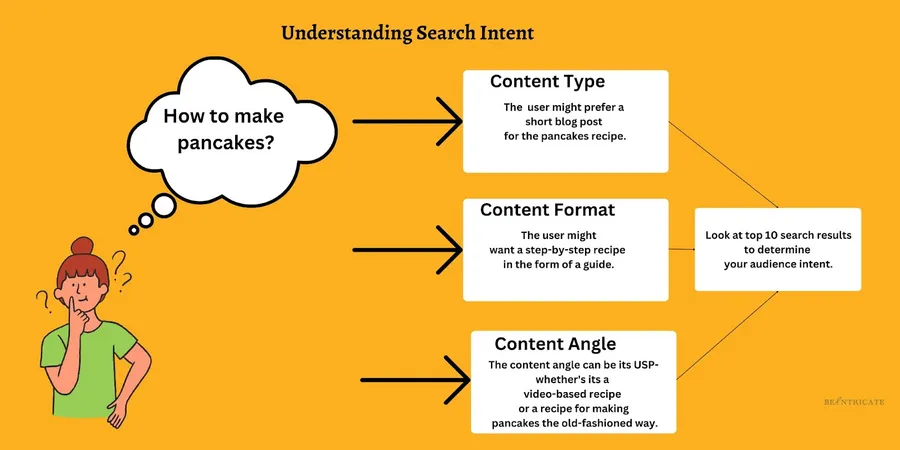
- Content Type: Is it a blog post, product page, tutorial, or something else?
- Content Format: Is it a listicle, how-to guide, review, or comparison?
- Content Angle: What is the focus of the content? Is it about price, quality, ease of use, or a specific problem?
By understanding the “three C’s” (Content-Type, Content Format, and Content Angle), you can create content that aligns with user expectations and provides the information they’re looking for.
Step 3: Creating High-Quality Content To Rank Higher on Google

High-quality content is the foundation of successful SEO. Google prioritizes content that is helpful, informative, engaging, and user-focused. Your content should:
- Be Original: Avoid duplicate content and plagiarism. Create unique content that offers fresh perspectives and insights.
- Be Comprehensive: Cover the topic thoroughly and provide in-depth information.
- Be Accurate: Ensure your content is factually accurate and up-to-date. Cite your sources where appropriate.
- Be Engaging: Use clear and concise language, incorporate visuals, and break up large blocks of text to make your content easier to read and understand.
- Provide Value: Offer practical advice, solve problems, answer questions, or entertain your audience.
High-quality content is more likely to be shared on social media, linked to by other websites, and ultimately, rank higher in search results.
Step 4: On-Page SEO: Optimizing Your Website Structure
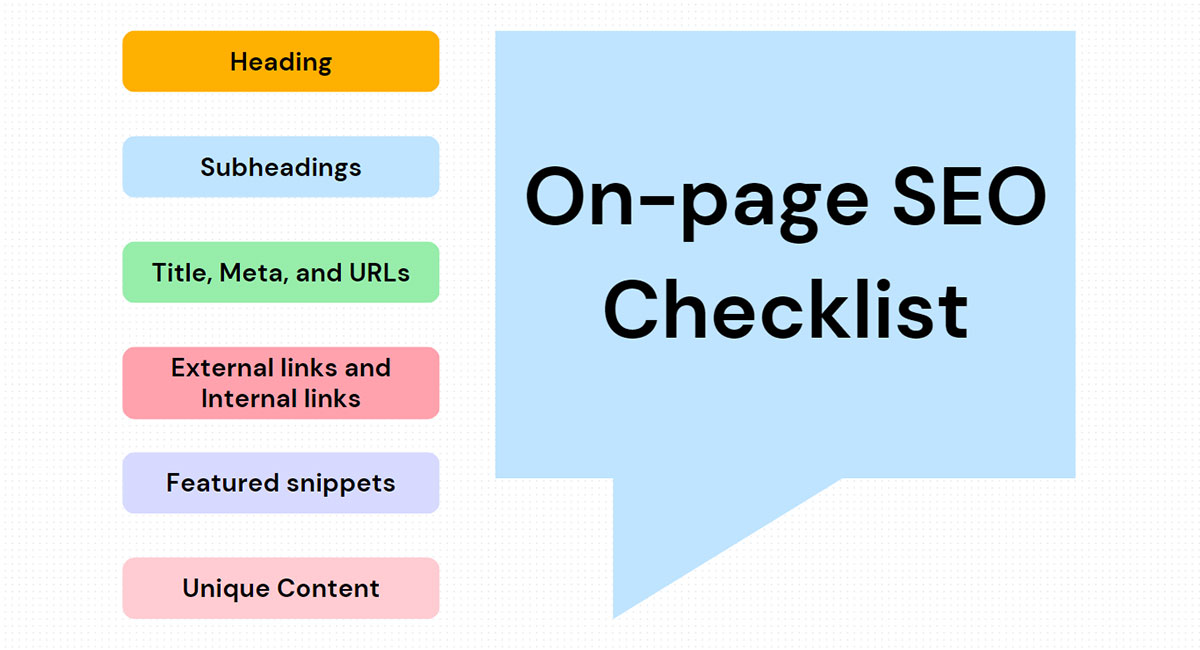
On-page SEO involves optimizing elements within your website to improve its visibility in search results. Key on-page SEO factors include:
- Title Tags and Meta Descriptions: As mentioned earlier, these are crucial for attracting clicks from search results.
- Header Tags (H1-H6): Use header tags to structure your content logically and improve readability.
- URLs: Use short, descriptive URLs that are easy to understand and contain your target keyword.
- Image Optimization: Optimize images by using descriptive filenames and alt text. Compress images to improve page speed.
- Internal Linking: Link between pages on your website to improve site navigation, distribute link equity, and help search engines understand the relationships between your content. Use relevant anchor text when linking internally.
- Mobile-Friendliness: Ensure your website is responsive and mobile-friendly. Google prioritizes mobile-first indexing.
- Page Speed: Optimize your website’s loading speed. A fast-loading website provides a better user experience and can improve your search rankings.
- Schema Markup: Implement schema markup to provide search engines with more information about your content. This can enhance your search listings and improve click-through rates.
Step 5: Building High-Quality Backlinks To Rank Higher on Google
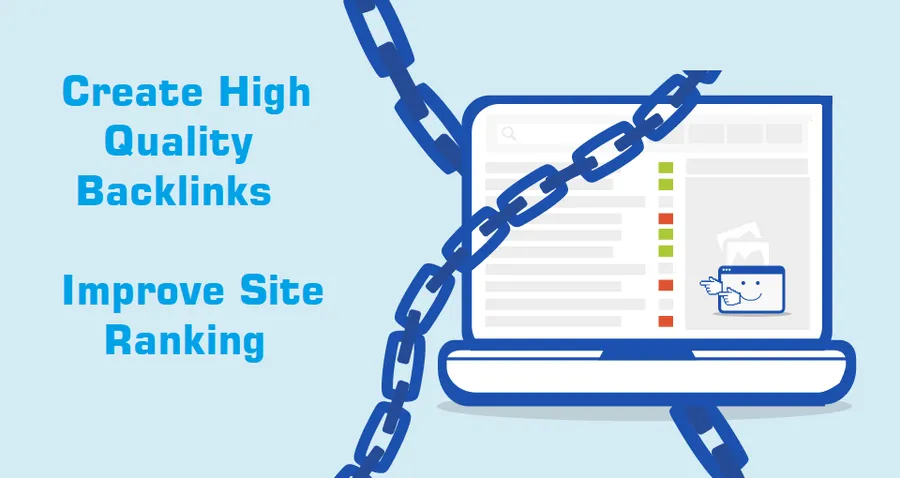
Backlinks, links from other websites to yours, are a strong signal of credibility and authority in the eyes of search engines. Think of them as votes of confidence. Earning high-quality backlinks is crucial for improving your website’s ranking. However, quality trumps quantity. A few backlinks from reputable and relevant websites are far more valuable than many links from low-quality or irrelevant sites.
Building backlinks requires a strategic and long-term approach. Here are some effective strategies:
- Create Linkable Content: Develop high-quality, informative, and engaging content that other websites will naturally want to link to. This could include:
- Original Research: Conducting and publishing original studies or surveys.
- In-Depth Guides: Creating comprehensive guides on specific topics.
- Infographics and Visualizations: Presenting data in a visually appealing and shareable format.
- Tools and Calculators: Developing useful tools that others can use and link to.
- Expert Interviews: Interviewing industry experts and publishing the content on your site.
- Outreach: Identify relevant websites and blogs in your industry and reach out to them. Explain why your content would be valuable to their audience and politely request a link. Personalize your outreach emails and avoid generic templates. And if you want to scale this process without compromising on quality, consider partnering with a trusted link-building agency like Outreach Monks to handle your outreach and secure high-authority backlinks at scale.
- Guest Blogging: Contribute high-quality articles to other websites in your niche. Guest blogging provides an opportunity to reach a new audience, establish yourself as an expert, and earn backlinks to your website.
- Broken Link Building: Identify broken links on other websites in your industry and suggest your content as a replacement. This is a win-win situation, as you’re helping the website owner fix a broken link while earning a backlink for yourself.
- Directory Submissions: Submit your website to relevant and reputable online directories. While not as powerful as editorial backlinks, directory submissions can still be a valuable source of traffic and help improve your website’s visibility.
- Social Media Promotion: While social media links are generally no-follow (meaning they don’t directly contribute to ranking), promoting your content on social media can increase its visibility and attract natural backlinks.
- Monitor Backlinks: Use backlink analysis tools like Ahrefs, SEMrush, or Moz Link Explorer to monitor your backlink profile. This will help you identify new link opportunities, track your progress, and identify any potentially harmful backlinks.
Step 6: Keeping Content Fresh To Rank Higher on Google
Content freshness is a ranking factor that varies depending on the search query. For some topics, like news or current events, Google prioritizes recently published or updated content. For other topics, like evergreen content (e.g., “how to tie a tie”), freshness may be less important.

To determine if freshness is a ranking factor for your target keywords, analyze the top-ranking pages. If most of the results have been recently updated, then you should prioritize freshness as well.
Here are some ways to keep your content fresh:
- Regular Updates: Review and update your content regularly, adding new information, statistics, examples, and insights.
- News and Trends: Incorporate current events and industry trends into your content where relevant.
- Content Refresh: Rewrite and republish older content to make it more relevant and up-to-date.
- Add New Sections: Expand your content by adding new sections or chapters.
- Update Images and Videos: Replace outdated images and videos with newer, more relevant ones.
Step 7: Monitoring Your Rankings To Rank Higher on Google
Tracking your keyword rankings is essential for understanding the effectiveness of your SEO efforts. Rank tracking tools like Ahrefs’ Rank Tracker, SEMrush, or RankRanger allow you to monitor your keyword rankings over time and identify areas for improvement.
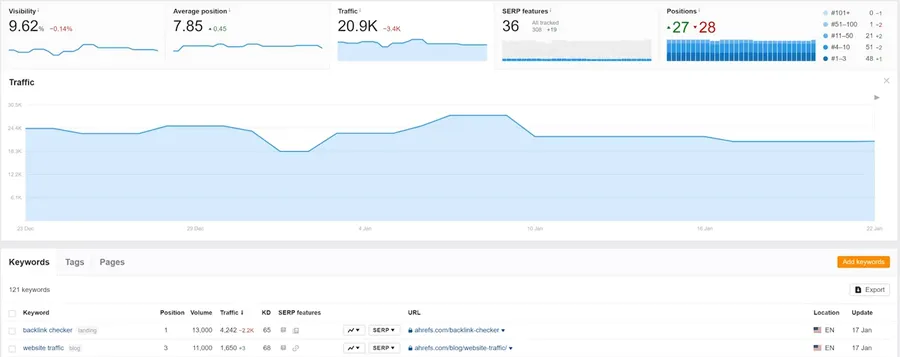
Use rank tracking data to:
- Identify Ranking Opportunities: See which keywords you’re ranking for and which keywords you could potentially rank higher for with some additional effort.
- Track Progress: Monitor how your rankings are changing over time to see if your SEO strategies are working.
- Identify Problems: Identify any drops in rankings and investigate the cause. This could be due to algorithm updates, technical issues, or changes in the competitive landscape.
- Refine Your Strategy: Use the data from your rank tracking to refine your SEO strategy and focus on the areas that need the most attention.
Step 8: Enhancing Online Visibility To Rank Higher on Google
Simply having a website isn’t enough. You need to actively work on enhancing your online visibility to reach your target audience. This involves a multi-faceted approach that goes beyond just optimizing your website. Consider these strategies:

- Local SEO: If you have a local business, optimize your Google My Business profile and ensure your business information is consistent across all online platforms. Encourage customers to leave reviews on your Google My Business profile. List your business in relevant online directories.
- Social Media Marketing: While social media links may not directly impact search rankings, a strong social media presence can increase brand awareness, drive traffic to your website, and create opportunities for earning natural backlinks. Share your content on relevant platforms and engage with your audience.
- Online Advertising: Consider running paid advertising campaigns on Google Ads or social media to reach a wider audience and drive targeted traffic to your website. While paid advertising doesn’t directly improve organic rankings, it can increase brand visibility and generate leads.
- Public Relations and Outreach: Reach out to journalists, bloggers, and influencers in your industry to promote your content and earn media coverage. This can increase brand awareness and generate high-quality backlinks to your website.
- Community Engagement: Participate in online forums, communities, and groups related to your industry. Share your expertise, answer questions, and build relationships with other members.
- Email Marketing: Build an email list and send regular newsletters to your subscribers. Share your latest content, promote special offers, and keep your audience engaged.
- Content Marketing: Create valuable and informative content that attracts and engages your target audience. This could include blog posts, articles, videos, infographics, or podcasts. Share your content on social media and other platforms to reach a wider audience.
Step 9: Strategic SEO Approach To Rank Higher on Google
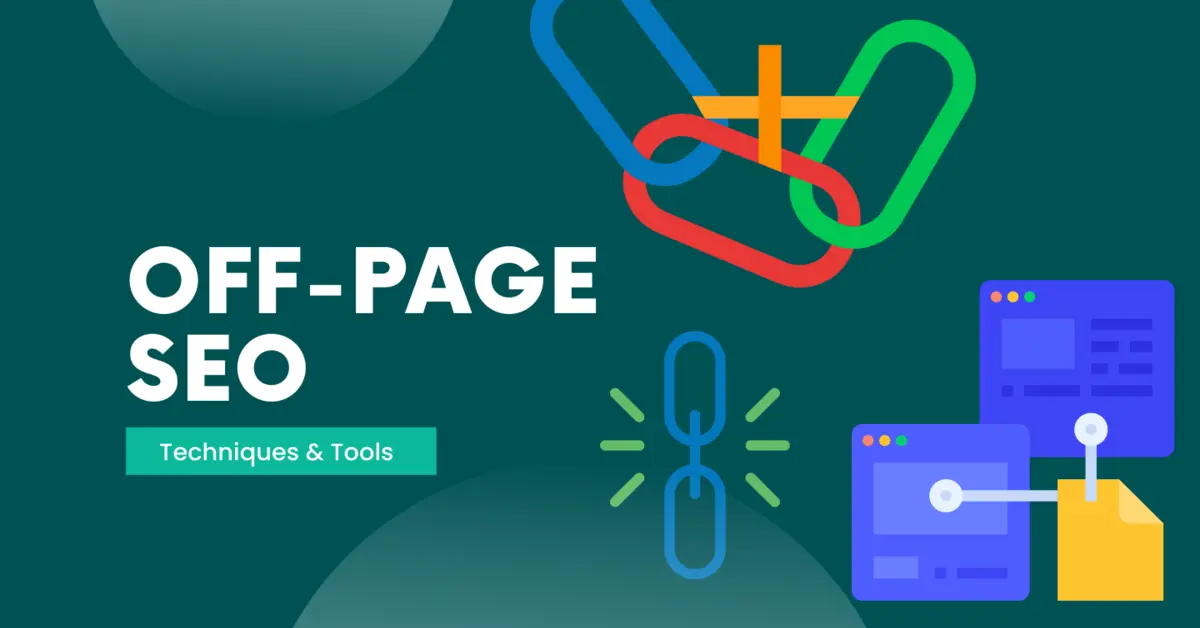
SEO is not a one-time activity. It’s an ongoing process that requires continuous effort and adaptation to Google’s evolving algorithms. A strategic SEO approach should be based on these core principles:
- User-Centricity: Focus on providing the best possible user experience. Create content that is informative, engaging, and easy to navigate. Ensure your website is mobile-friendly and loads quickly.
- Search Intent: Understand the intent behind user searches and create content that satisfies those needs. Analyze the top-ranking pages for your target keywords to understand what users are looking for.
- Technical SEO: Ensure your website is technically sound and easily crawlable by search engines. This includes optimizing your website’s structure, site speed, mobile-friendliness, and schema markup.
- On-Page Optimization: Optimize individual pages on your website by using relevant keywords in your title tags, meta descriptions, headings, and content.
- Off-Page Optimization: Build high-quality backlinks from reputable websites to improve your website’s authority and credibility.
- Content Marketing: Create valuable and informative content that attracts and engages your target audience. This is a crucial aspect of a long-term SEO strategy.
- Data Analysis and Tracking: Track your keyword rankings, website traffic, and other metrics to measure the effectiveness of your SEO efforts. Use this data to refine your strategy and make informed decisions.
- Adaptability: Stay up-to-date with the latest SEO trends and algorithm updates. Be prepared to adapt your strategy as needed to maintain your rankings and visibility.
- Integrating Dynamic Content: Enhancing user experience also involves integrating dynamic content. Like: When you embed Social media feed, such as Facebook feeds or Instagram feeds for free, you keep your website visually engaging and interactive, encouraging visitors to stay longer and interact more.
Final Thoughts for Ranking Higher on Google
Ranking higher on Google is an ongoing journey that requires a combination of high-quality content, technical optimization, strategic link building, and continuous adaptation to the ever-changing SEO landscape. Hopefully, you can significantly improve your website’s visibility, attract more organic traffic, and achieve your online business goals by following the steps outlined in this guide and consistently implementing best practices.
FAQs: How to Rank Higher on Google
Q1. What are the fastest ways to rank higher on Google?
Focus on keyword optimization, on-page SEO, and building quality backlinks. Quick wins include improving page speed and optimizing titles/meta descriptions.
Q2. Does keyword stuffing hurt rankings?
Yes. Overusing keywords looks unnatural and harms user experience. Instead, use semantic keywords naturally.
Q3. How long does it take to rank on Google?
Most SEO strategies take 3–6 months to show measurable results, depending on competition and niche.
Q4. Is AI helpful for SEO today?
Absolutely. AI tools streamline keyword research, content generation, and SERP analysis, but human expertise is still essential.
Read more: 15+ Best WordPress Speed Optimization Plugins
Contact US | ThimPress:
Website: https://thimpress.com/
Fanpage: https://www.facebook.com/ThimPress
YouTube: https://www.youtube.com/c/ThimPressDesign
Twitter (X): https://twitter.com/thimpress
